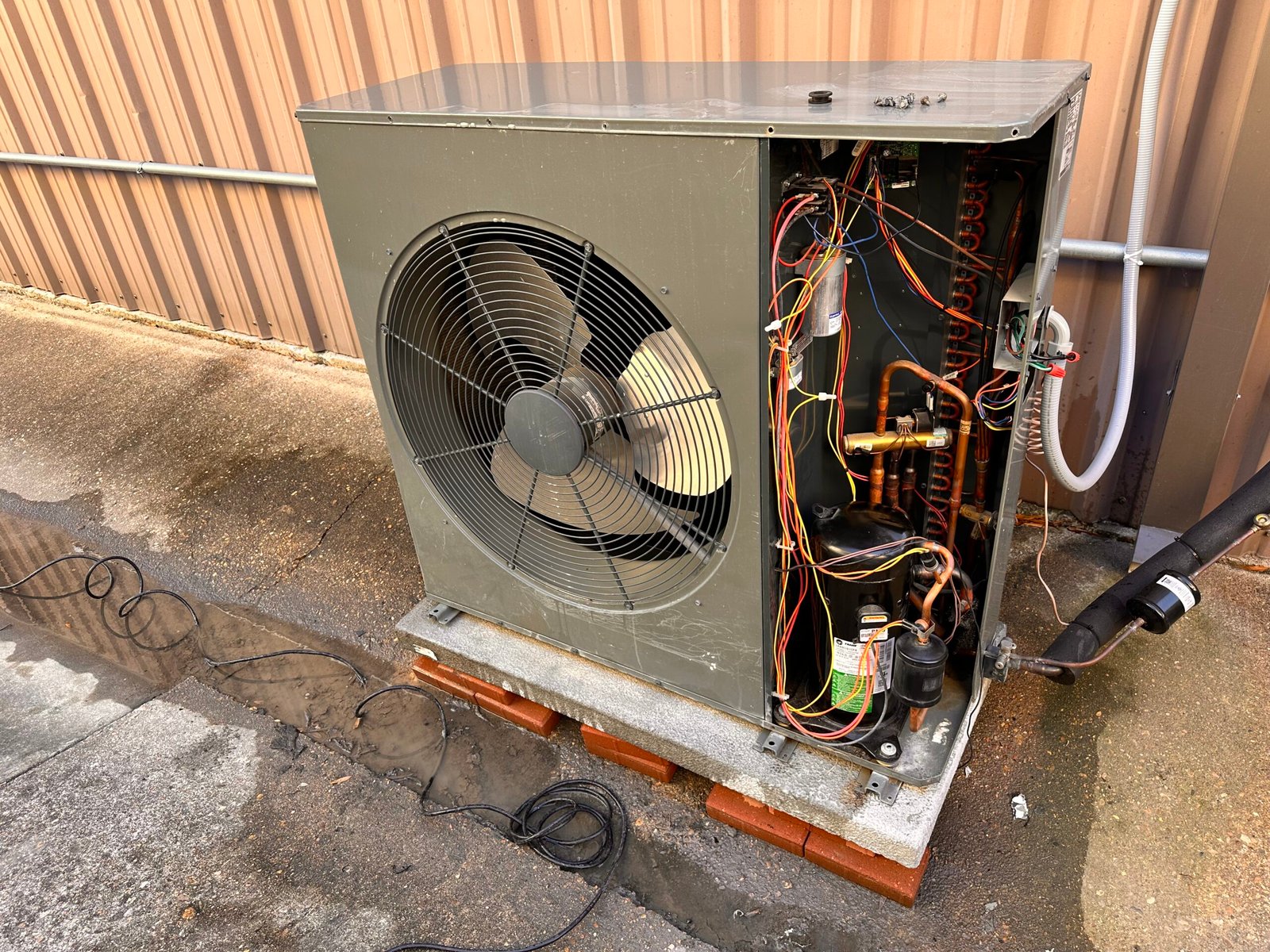Experts estimate that over 50 percent of houses in the United States have issues with mold.
Is your house one of them?
If so, your air conditioner could be the source of the problem.
Read on to learn more about AC mold and what you can do to combat it.
What Causes Air Conditioning Mold?
At the end of the day, mold growth in your home almost always comes down to moisture.
If there’s excess moisture, mold is likely to follow.
A leak in your roof or a leaky pipe in your walls can cause water buildup and mold growth, for example.
In the case of air conditioner mold, specifically, there are a couple of different ways that it can happen.
If you have mold in another part of your home, for example, it could make its way into your air
conditioning system.
This is because your air conditioner is responsible for ventilating your home.
The air conditioner recycles air throughout the home and, as that air is moving through your ducts, mold spores can end up in your unit and ductwork.
Air conditioner mold can also be the result of an issue with your air conditioning system itself.
If you have not been maintaining your unit as well as you should, you could end up with clogged or leaking drain pans.
This, in turn, can lead to moisture buildup and, over time, mold growth.
Signs of AC Mold
It’s not always easy to tell if you’re dealing with AC mold.
This is especially true if it’s collected in your ductwork or air vents and isn’t visible.
Often, people first notice mold growth because they detect a strange, musty smell in their house.
You might also experience certain physical symptoms associated with mold exposure, including the following.
- Itchy and/or irritated eyes
- Nose/throat irritation
- Frequent sneezing and/or coughing
- Fatigue
- Headaches
- Skin rashes
- Breathing difficulties
- Trouble concentrating
- Nausea
- Vomiting and/or diarrhea
Mold in your air conditioner (or any other part of your house, for that matter) can lead to serious health problems for you and your family.
The sooner you can get it under control, the better off you and your loved ones will be.
Addressing mold and the moisture that caused it will also help you to correct any issues with your house as soon as possible.
As a result, you will be able to avoid more expensive damage and repairs in the future.
How to Address AC Mold
What should you do if you suspect you have AC mold growth?
Here are some steps you should take to stop mold growth, get rid of the existing mold, and prevent future mold growth from occurring.
Prioritize Safety
Your safety always comes first, especially when you are tackling mold. You do not need a lot of equipment for dealing with AC mold growth. You should have some gear on hand, though, including:
- A face mask (preferably an N95 mask)
- Gloves (nitrile or latex is best; you might also want leather or mechanics gloves to wear over them when cleaning sharp parts of your air conditioner, such as the fins)
Gather Your Supplies
Be sure to gather your cleaning supplies, too. You will want to have the following at the ready to clean your unit thoroughly:
- Antibacterial dish soap
- Nylon scrub brush
- Paper towels or cloth rags
- A wet vacuum cleaner
- Screwdrivers
Clean Your Unit
Now, it is time to start cleaning.
Begin by turning it off completely.
Then, use your screwdrivers to open it up and take out anything porous that has gotten wet, such as insulation or filters.
Double bag these items and dispose of the waste as soon as you can.
From here, you can use a wet vacuum to suck out any standing water.
When the water is gone, use antibacterial soap and cloth rags or paper towels to clean the non-porous parts of the unit (the ductwork, coils, pans, etc.).
Remove Dust
Make it a point to vacuum up and get rid of dust in or around your unit, as well as throughout your home.
Mold feeds on dust, so keeping your home as dust-free as possible will help to prevent mold growth from occurring again.
Dry Everything Out
Ensure everything is fully dried in your home, too. This includes drying out carpets or furniture that may have gotten wet.
You can use your air conditioner’s fan function to dry out its interior.
This function causes air to blow through the unit to dry it, but the compressor will not turn on to remove any heat.
Call an HVAC Professional
If you notice or suspect AC mold growth, it is important to call a heating and cooling professional right away.
Experts can evaluate your unit and let you know if any problems with it contributed to or caused the mold growth (leaks, clogs, etc.).
From here, they can work with you to replace any parts that may have become damaged or address issues so that future mold growth does not happen.
Prioritize Regular Maintenance
Often, AC mold growth is the result of a lack of regular maintenance.
If you have a professional coming to check out your unit consistently, they are going to spot mold and/or issues that can cause mold early on.
This, in turn, allows them to address the issue right away before you have a full-blown mold crisis on your hands.
Fix Your AC and Say Goodbye to Mold Today
Do you suspect that you have AC mold growth in your home?
If so, contact us today at [company_name].
Our air conditioning experts can help you fix your AC to ensure it is working properly.
We can also provide regular maintenance so you can spot potential problems as soon as possible.
If you are dealing with leaks, clogs, or other challenges, we will get them sorted out right away. That way, you can enjoy better air quality and a more efficient air conditioner.
It is a win-win! 😊





